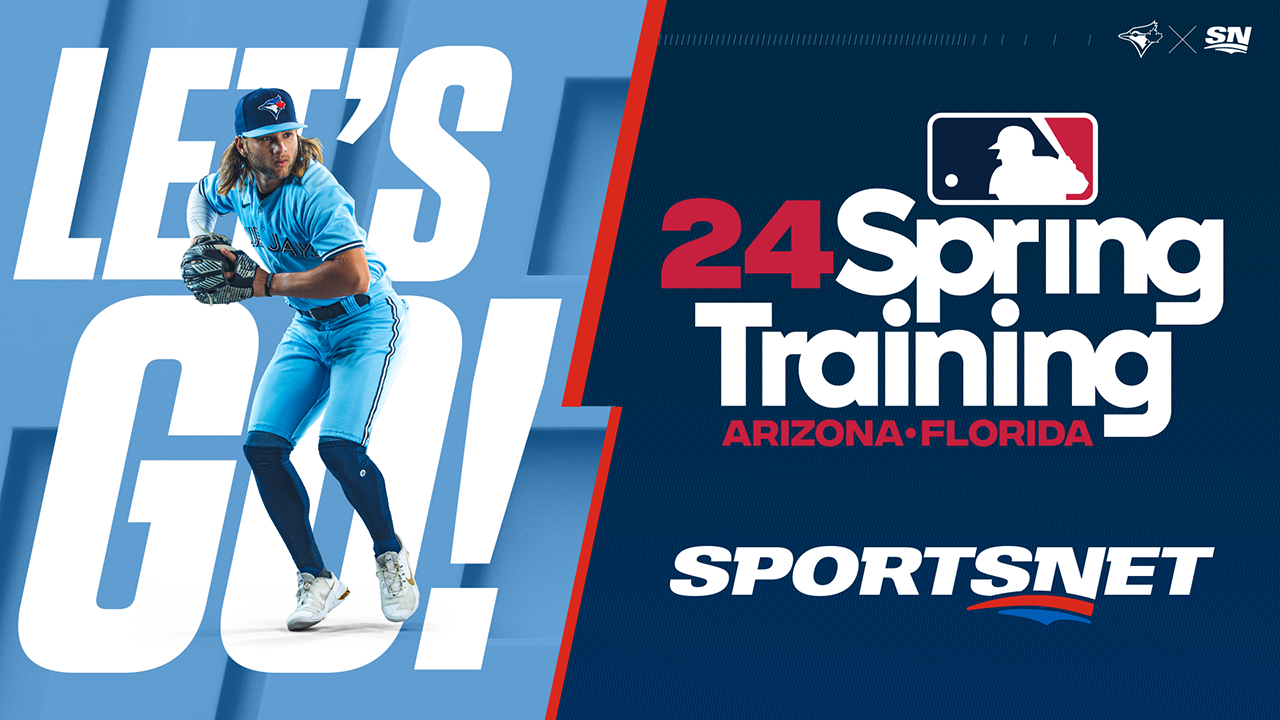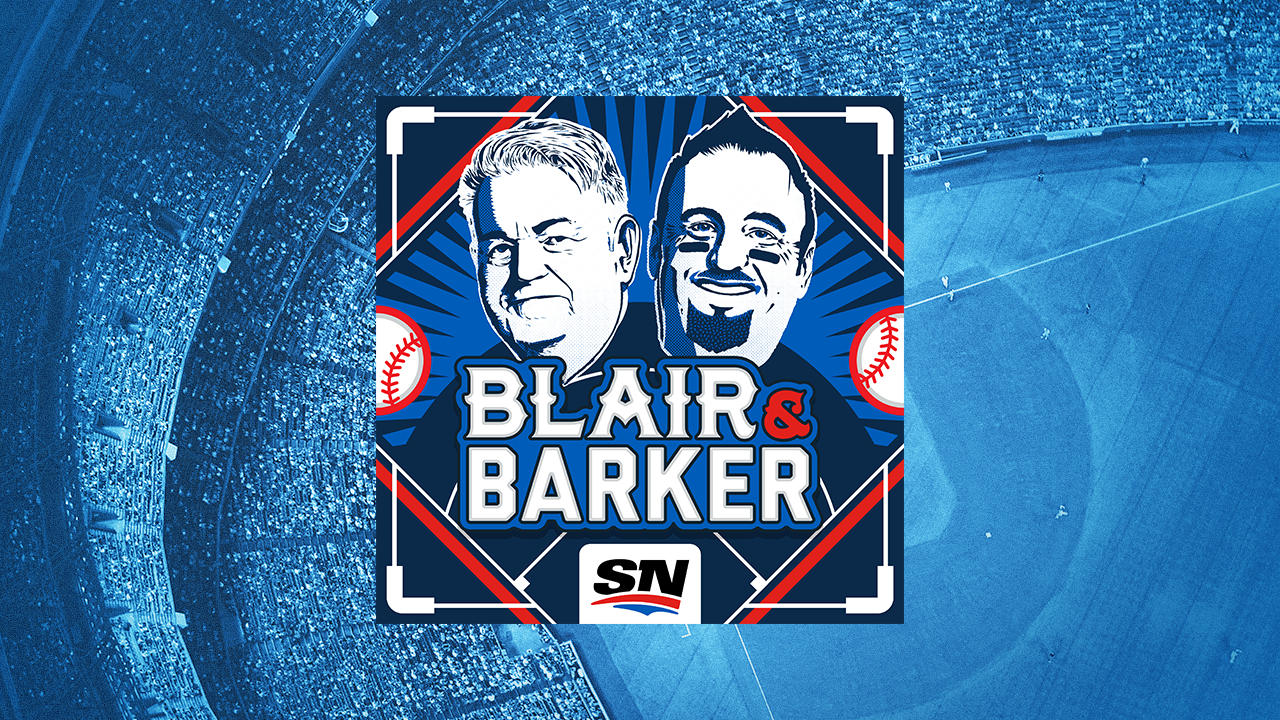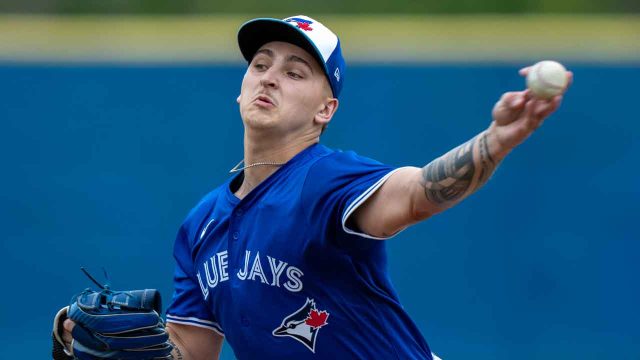We’re all certain Matt Chapman‘s fondest desire was to return to the Toronto Blue Jays for $20 million, right?
We’re all certain that he would have gladly taken a one-year contract to come back here and play third base (even though he effectively turned down more when the Blue Jays extended him a $20.35-million qualifying offer) as opposed to staying close to his California roots and play for a manager and general manager he knows in an area he’s spent most of his career?
Look: I get it. There is no world where I wouldn’t rather have Chapman at third base than Isiah Kiner-Falefa, and the contract he signed this weekend with the San Francisco Giants — three years and $54 million for competitive balance tax purposes, but in actuality just one year, $18 million guaranteed (plus a $2 million bonus) with two years of player options/club buyouts and a fourth mutual option — would have allowed the Blue Jays considerable flexibility. I’d have done it in a heartbeat.
It’s been a funny old off-season, hasn’t it? Right from the start, a return to the Blue Jays was one of the most fancied outcomes for Chapman on all those insider lists. But here’s the thing; I think many in the industry have been guilty of a fundamental misreading of the Blue Jays’ off-season plans.
The idea that money for Shohei Ohtani could be divvied up elsewhere was wrong — the case for pursuing Ohtani was unique, both from a baseball and corporate point of view. The play was driven by ownership (the same owners of this website) and it was “special money,” as my friend David Samson calls it. It was not available for Vladimir Guerrero, Jr., or Bo Bichette (not yet, at least,) let alone Chapman. Once Ohtani’s deal with the Los Angeles Dodgers was official, it took some of us a while to come back down to Earth and remember what President and CEO Mark Shapiro said in October:
“I don’t expect a dramatic philosophical shift in payroll,” said Shapiro. “I expect us to stay in the same area.”
According to Spotrac, the Blue Jays’ projected payroll for 2024 — for competitive balance tax purposes — is $243 million, the seventh highest in the Majors. Last season, when they were a luxury tax team for the first time, the Blue Jays’ payroll was $257.7 million — the fifth highest in the Majors. As of now the Blue Jays are again going to be above the luxury tax threshold, meaning the penalties are more onerous than the $5.5 million the team paid last season.
General manager Ross Atkins indicated last month that, at this point, any further addition to the roster would necessitate a subtraction. Hence, adding Chapman at $20 million would have necessitated another move. At this point. Does that mean ownership is belt-tightening? If that’s the case, payroll would be cut, not maintained.
Does that mean Atkins wants to have wiggle room to add at the trade deadline and avoid one of the mistakes made by his predecessor, Alex Anthopoulos, in 2014? I hope so. Even Atkins’ critics must acknowledge that he’s always added at the deadline, and part of the off-season process involves getting a read on trade assets that might become available in early August. Will lower-than-anticipated media revenues that hamstrung some teams this winter necessitate mid-season moves? Are the Blue Jays averse to racking up an even bigger luxury tax hit… or is it that the front office has determined that asking for a stretch-drive boost after a half-year of in-stadium revenue is a more palatable play than asking for more money right now?
But let’s circle back to Chapman. The Blue Jays front office has a better read on Chapman than the rest of us. Again: Are we certain Chapman and the Blue Jays didn’t grow apart last season? That Chapman isn’t happier being in Cali? That there isn’t a bunch of human nature going on here?
Chapman, we’re told, turned down a contract extension of six years and about $125 million from the Blue Jays last season. It’s the second time in his career that Chapman has balked at a big contract. According to Ken Rosenthal of The Athletic, he rejected a 10-year, $150-million extension from the Oakland Athletics in 2019. As we’ve also noted, he turned down a qualifying offer that as it turns out was $350,000 more than the figure he eventually received from the Giants.
One thing has become clearer in the past decade: teams have become much more disciplined in placing dollar valuations on players and are less likely to alter those valuations based on the strength or weakness of a particular free-agent market. And it’s clear that the Blue Jays decided Chapman wasn’t worth putting the rest of their off-season plans on hold — as underwhelming as the off-season has been.
Look: I wouldn’t have let this off-season play out the way the Blue Jays front office let it play out. But I understand why it transpired the way it did, and at this point I’m taking solace in the fact that Kiner-Falefa’s presence doesn’t preclude them from trading for a third baseman and that ownership has never been more engaged. Even if Chapman was back, Guerrero Jr. still needs to hit. Alejandro Kirk needs to get his Captain’s rank back… and we’ll deal with ol’ George Springer in a minute.
Hey. At least I didn’t mention that there might be a virtue in keeping your powder dry with an eye toward next winter’s bumper free-agent crop.
Thrown a curve
Jose Berrios is working on a cutter. Ditto Carlos Rodon. Grayson Rodriguez of the Baltimore Orioles is throwing a two-seamer this spring. Bryce Miller of the Seattle Mariners has added a split-fingered fastball to his mix and the team has imposed a limit of four per game on him citing concerns about the strain it puts on his arm, which Miller exceeded in his first spring outing. Pitchers, man. Sheesh!
But Spencer Strider adding a curveball is maybe the coolest add of the spring — especially since his pitching coach, Rick Kranitz, was Greg Maddux’s first pro coach when the future Hall of Famer — whose curveball was a calling card — broke in with the Chicago Cubs organization. These are the best type of spring training stories.
Spring-time
Hearing Blue Jays manager John Schneider say George Springer is going to make a conscious effort to pull the ball this spring brought a smile to the face of my on-air partner Kevin Barker because goodness knows Springer needs to do something different. Why don’t we talk about the fact that Springer’s healthiest season since his breakout in 2016 was also his least effective year offensively? Springer played in the most games (154) since 2016 and had the most plate appearances and most at-bats. But in terms of home runs, average, OPS+, wRC+ and isolated power — pick your alphabet — it was by far his worst season. I mean… by far.
The fact that his pull percentage went down nine points in 2023 might have something to do with his decreased offensive value, so why not make a change? Springer, whose contract has two more years and $45 million remaining after 2024, has shown no interest in a move out of the lead-off spot. But that’s another issue, and it’s not as if there’s a better option at the top of the order.
Time’s up
When he was with the Blue Jays and a much-respected voice in the Major League Baseball Players Association, Curtis Granderson would often wonder why MLB and its broadcast partners wouldn’t change in-game advertising to help speed up the game. Granderson understood the need to focus on game time and pace of play and seemed aware that there would be a time when a pitch clock came into play. But Granderson also suggested cutting down on time between innings, and perhaps making more use of in-game advertising features such as small and split screens that are sometimes used in sports without regular stoppages such as soccer and auto-racing. I think baseball’s pretty much reached the limits when it comes to cutting down the pitch clock… so I’ll just leave this with you and run and hide before the advertising folks come after me.
Gibby takes a bite of the Big Apple (again!)
Every year at the winter meetings they have a manager’s brunch, with all 30 managers and some reporters at each table. Some tables get full fast, others have spare seats. When John Gibbons was Blue Jays manager, it wasn’t unusual to see a spillover of New York writers scootch up beside him. Bob Klapisch of The Newark Star-Ledger was a regular.
It wasn’t just that Gibby was — and is — good company., It’s also because he occupies a kind of quirky, cultish place in New York Mets history. He was in the bullpen catching relievers when Mookie Wilson rolled that ball through Bill Buckner’s legs… and people forget that it was a broken hand suffered in a spring training plate collision that cost the former first-round pick of the Mets his best shot at a regular Major League career. He was the Mets catcher of the future, saw Mike Fitzgerald step up in his absence and stake a claim to the job, and then saw Fitzgerald traded to the Montreal Expos for Hall of Famer Gary Carter. That Mets writers corps was a terrific group and they’d always beat a door to Gibby’s office, which tells you something. So I enjoyed this read from our Shi Davidi about Gibbons’ return to the game as the Mets bench coach. Suits him.
Mystery? What mystery?
I asked in a previous column why the Blue Jays looked outside the organization before naming Don Mattingly as offensive coordinator. Ask and ye shall receive. The Blue Jays wanted to allow Mattingly to take a run at one of the managerial openings. Fair play to them. Mattingly’s new gig was announced one day after Stephen Vogt was named manager of the Cleveland Guardians and on the day word leaked that the Chicago Cubs had hired Craig Counsell. A little more than a week later, the Milwaukee Brewers announced they were staying internally and hired Pat Murphy as Counsell’s replacement.
Other teams that had openings? The San Diego Padres (Mike Shildt), Los Angeles Angels (Ron Washington), Houston Astros (Joe Espada), New York Mets (Carlos Mendoza) and San Francisco Giants (Bob Melvin.) Told Mattingly was a serious candidate for at least one of the jobs.
Dumbing down the discourse
Someone give Joey Votto a job already. Please.












